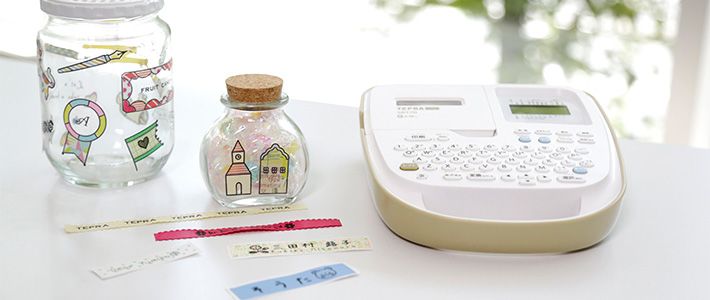
The Simple Joys of Japanese Stationery
Labeling Japan for 30 Years and Counting
Guideto Japan
Culture- English
- 日本語
- 简体字
- 繁體字
- Français
- Español
- العربية
- Русский
Wherever Labels are Needed
The Tepra label printer is a common feature in homes and workplaces around Japan. It was launched by Japanese stationery maker King Jim in 1988. With just a push of a button, the compact, versatile device rolls out customized stickers that are easily applied to lockers, binders, office equipment, or anywhere labels are needed. It has continued to develop over its 30-year history, adding new functions and graphics to keep pace with the changing needs of the digital age.
According to Uehara Takayuki, head of King Jim’s label printer product development department, the steady march of office automation served as impetus for the Tepra. “At the time binders were our bread and butter,” he explains. “But as offices changed there was a growing urgency to diversify our lineup with electronics. A label printer was an obvious match for our other products.”
The device was based on the idea that companies could tidy up their shelves by swapping rows of binders with hand-written tags for those sporting neatly printed, easy-to-read labels. King Jim started out touting Tepra’s convenience, but its biggest appeal proved to be its versatility.
“Companies found it a handy organizing tool not just for binders,” states Uehara, “but also for keeping track of office equipment and other items. Factories began using it to print out safety warnings for machinery. They liked that the labels were easy to read, long lasting, and impervious to water damage.”
People soon discovered a variety of home uses for the Tepra. These included labeling kitchen items like seasonings and ingredients, attaching children’s names to school items, and organizing boxes and other storage cases in closets. At the time, audio and video tapes were still in widespread use, and many people relied on the Tepra to keep their recordings of music, movies, and television programs in order. Customers found new uses for the device, helping drive its development.
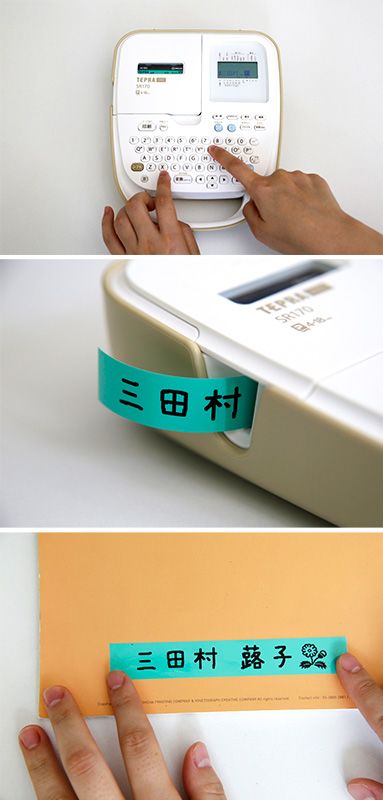 Tepra models vary by price and function. The SR170 above goes for ¥8,000 and offers a choice of fonts and graphics such as pictures and emoji.
Tepra models vary by price and function. The SR170 above goes for ¥8,000 and offers a choice of fonts and graphics such as pictures and emoji.
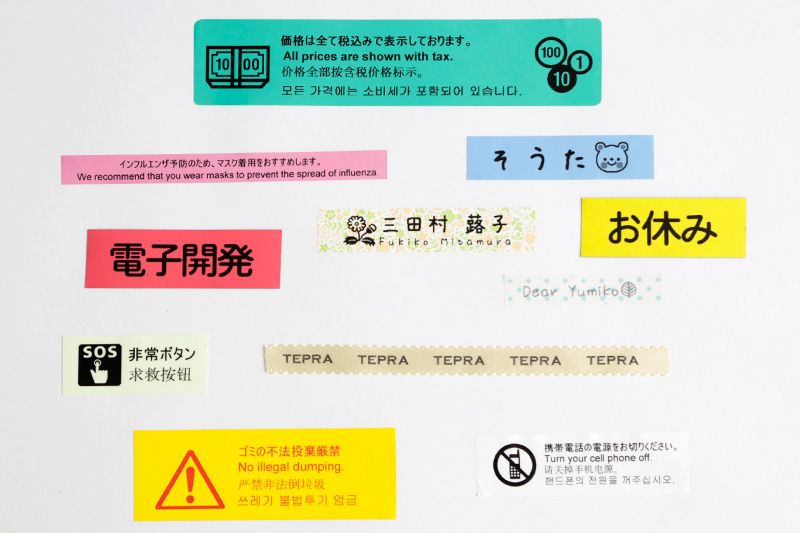 Label tapes are available in a variety of colors, designs, and sizes. Users can also take advantage of an online tool to make stickers in languages like Chinese, English, and Korean.
Label tapes are available in a variety of colors, designs, and sizes. Users can also take advantage of an online tool to make stickers in languages like Chinese, English, and Korean.
The Spice of Life
King Jim has continued to expand the Tepra lineup, adding new functions to keep in step with trends and changing technology. One of the first changes the firm initiated was switching from input dials to keyboards in 1992. There are now around 70 models of the machine, ranging from standard and home versions to those featuring high-tech specs and PC compatibility.
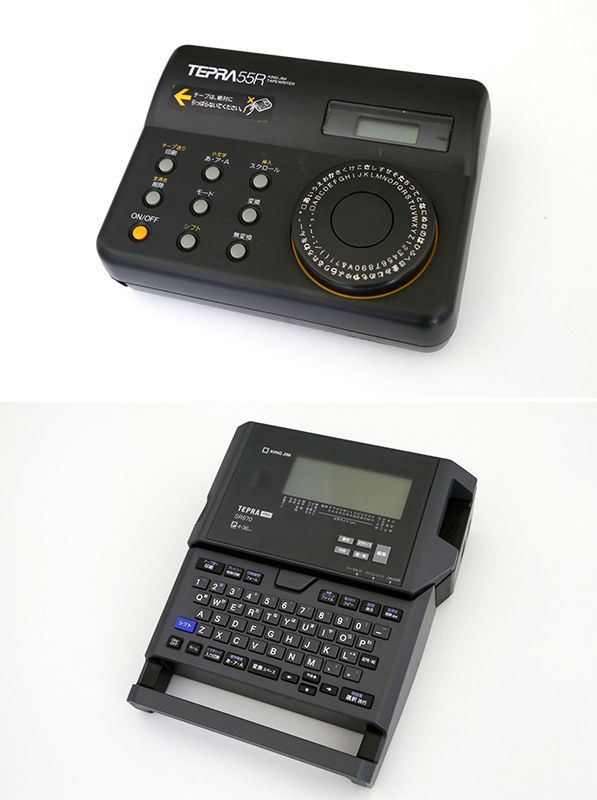 The TR55 model (top) debuted in 1988 and featured a dial for inputting characters. The SR970 version launched in 2015 offers speed printing and can make labels in several different languages.
The TR55 model (top) debuted in 1988 and featured a dial for inputting characters. The SR970 version launched in 2015 offers speed printing and can make labels in several different languages.
The company has also steadily expanded its selection of printer tapes, tapping into demand and input from customers to add different widths, colors, and designs. It currently has over 350 kinds, including standard varieties, magnetic versions for use with whiteboards, plain and decorative iron-on cloth types, and even some that glow in the dark.
Technological developments have frequently helped improve products. As an example, early varieties used laminated film to protect the labels and were pricey. But the development of durable inks has made this unnecessary, significantly lowering the cost of products.
Uehara notes that growth in tapes and machine models have gone hand in hand. “When we launched our broad, 36-millimeter tape, the printers were not fully capable of accommodating the size,” he explains. “Letters tended to get blurred around the upper and lower edges. Improvements to the Tepra have successfully done away with this issue.”
The extent of Tepra’s lineup has made it easier for customers to find a printer that fits their needs and helps their bottom line. For instance, when the Japanese government raised the consumption tax from 5% to 8%, many retailers used the Tepra to update listed prices and other information without needing to completely reprint items like brochures and price tags.
Kawaii Selections
King Jim for many years was content to just let consumers work out new uses for the Tepra. However, it now actively follows social trends and listens to advice from customers to develop new ideas for the printer.
In 2013 it rolled out a new model that tapped into rising interest in hand-made crafts and accessories. Targeting women, the machine offers cute fonts and frames along with functions for printing on ribbon and masking tape.
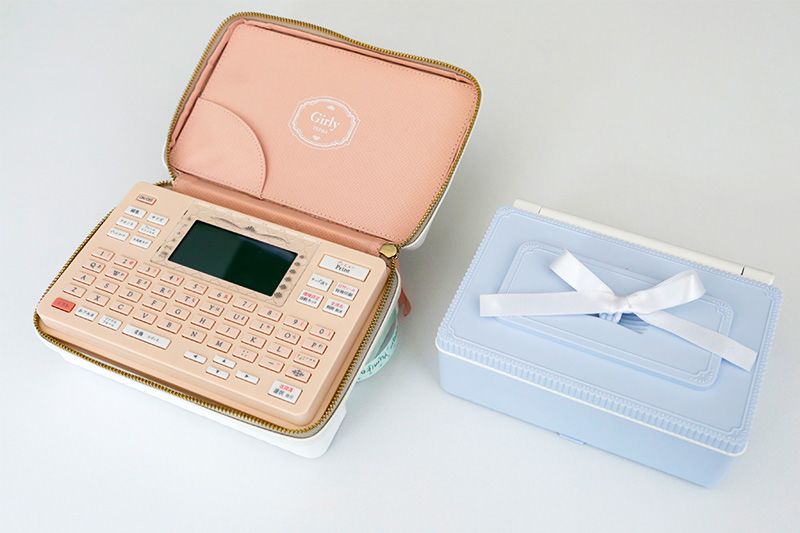 The latest model of the Girly Tepra was released in November 2017. Retailing for ¥12,000, it comes with a stylish cover and offers such features as cute fonts and a wide selection of emoji.
The latest model of the Girly Tepra was released in November 2017. Retailing for ¥12,000, it comes with a stylish cover and offers such features as cute fonts and a wide selection of emoji.
Uehara explains that targeting a specific audience was a distinct change. “We filled it with functions that specifically appeal to female users. Customers can express their creativity and individuality, and many people regularly share their creations on social media.”
Even as the digital age marches on, the Tepra continues to win followers with its creative options for ordering and sprucing up home and work.
(Originally published in Japanese on November 24, 2017. Photos by Nagasaka Yoshiki.)